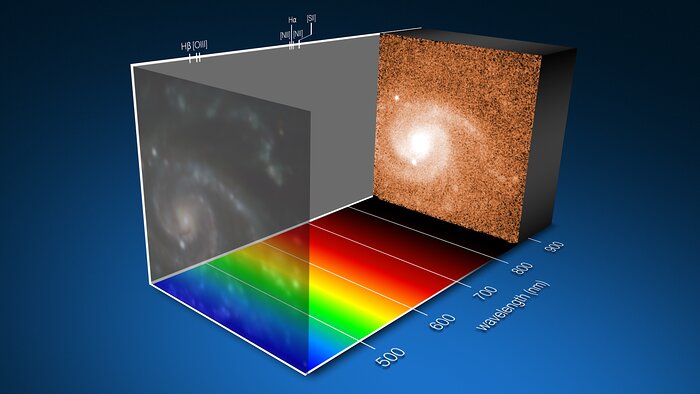Uncovering supernovae secrets
Screenshot of the animation in this Picture of the Week, which shows us the nearby galaxy NGC3456 in thousands of different colours or wavelengths of light, captured with ESO’s Very Large Telescope (VLT) at Paranal Observatory. Thanks to observations of more than 100 galaxies, including this one, astronomers are discovering there are properties of massive stars that could influence whether or not they end their lives in a spectacular supernova explosion.
Core collapse supernovae are the extremely energetic deaths of massive stars, those with eight times or more mass than the Sun. Aside from their sheer size, the exact properties — such as chemical makeup — of the stars that die as supernovae are poorly understood because we rarely get to see them before they explode. But, we can study the explosion sites.
A new study led by former ESO student Thallis Pessi at the Universidad Diego Portales (Chile) has done precisely that. The team analysed galaxies where supernovae have occurred, comparing the explosion sites themselves to all other regions within those galaxies. They found that the proportion of elements heavier than hydrogen or helium influences whether a supernova will happen: massive stars born out of gas with a lower abundance of these elements are more likely to explode as supernovae.
The team used data from the Multi Unit Spectroscopic Explorer (MUSE) instrument at the VLT. MUSE breaks the light coming from every location within its field of view into a rainbow or spectrum, allowing the team to map the chemical composition of these galaxies.
Link:
- Uncovering supernova secrets (video animation)
Bildnachweis:
ESO/T. Pessi et al.
Über das Bild
| ID: | potw2345a |
| Typ: | Illustration |
| Veröffentlichungsdatum: | 6. November 2023 06:00 |
| Größe: | 1920 x 1080 px |
